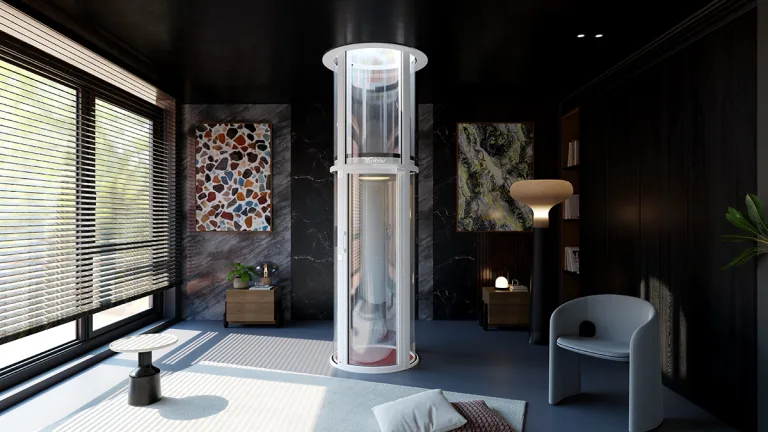What Is A Lateral Flow Dispenser? A Complete Guide For Diagnostics
Introduction
In the Modern World diagnostic landscape, lateral flow dispensers have emerged as indispensable tools in the development and manufacturing of point-of-care testing kits. As industry demands shift toward faster, more accurate, and user-friendly diagnostic solutions, we recognize the critical importance of incorporating advanced lateral flow dispenser technologies into our workflows. Their precision, consistency, and adaptability make them the backbone of countless immunoassay production lines.
What is a Lateral Flow Dispenser?
A lateral flow dispenser is a highly specialized instrument designed to deposit reagents precisely onto nitrocellulose or other membrane strips used in lateral flow assays (LFAs). These devices play a pivotal role in ensuring that diagnostic strips function correctly by delivering uniform lines of antibodies or other biological materials across the test and control zones. Their application spans industries, from clinical diagnostics and environmental testing to veterinary care and food safety.
Precision in Reagent Application
One of the most valuable attributes of a lateral flow dispenser is its ability to deliver highly consistent and precise lines. We understand that even the slightest deviation in reagent volume or line placement can compromise the accuracy of a test. That’s why using a high-quality lateral flow dispenser is essential for manufacturers seeking to uphold stringent performance standards.
Automated dispensers allow for meticulous control over variables such as flow rate, nozzle size, and dispensing patterns. This automation eliminates human error, minimizes waste, and ensures reproducibility across large batches—an absolute must for companies striving for scale without sacrificing quality.
Key Features of High-Performance Lateral Flow Dispensers
When evaluating or recommending a lateral flow dispenser, we focus on essential features that maximize productivity and reliability:
- Multi-nozzle configuration: Enables simultaneous application of multiple reagents.
- Adjustable dispensing speed: Offers flexibility to accommodate different membrane types.
- High throughput: Essential for mass production of diagnostic test strips.
- Precision alignment systems: Guarantees accurate deposition.
- Easy integration with existing manufacturing systems.
By investing in a high-grade lateral flow dispenser, businesses can enhance operational efficiency while maintaining uncompromising test quality.
Applications Across Diagnostic Sectors
We’ve observed the versatility of the lateral flow dispenser extend far beyond COVID-19 testing. Their application ranges from infectious disease detection and pregnancy tests to drug screening and biomarker analysis. In agricultural sectors, lateral flow dispensers are employed to develop assays for detecting plant pathogens, while in food safety, they’re critical in creating strips that identify allergens or contaminants.
With such wide-ranging applicability, it’s clear that the demand for precise lateral flow dispenser technology will continue to rise.
Enhancing Efficiency in Lateral Flow Assay Production
Efficiency is the cornerstone of any successful production line, and this is particularly true for LFA manufacturing. We have seen how automated lateral flow dispensers streamline reagent application, reduce labor costs, and significantly boost throughput. By automating a traditionally manual step, these dispensers eliminate inconsistencies and reduce the likelihood of batch failures.
Furthermore, the integration of lateral flow dispenser units into robotic manufacturing environments paves the way for fully automated, end-to-end production processes. This transition not only elevates productivity but also future-proofs operations against labor shortages and evolving regulatory requirements.
Material Compatibility and Versatility
An effective lateral flow dispenser must be compatible with various materials used in diagnostic strip construction. From nitrocellulose membranes to polyester backing cards, the dispenser must adapt seamlessly to different substrates without compromising dispensing accuracy. We prioritize equipment that supports a wide range of fluids, including colloidal gold, latex beads, enzymes, and monoclonal antibodies.
The ability of a lateral flow dispenser to handle various viscosities and fluid characteristics ensures that diagnostic developers maintain flexibility in assay formulation—allowing them to innovate rapidly in response to emerging healthcare challenges.
Cleanroom Ready and GMP Compliant Designs
In regulated environments, equipment must not only perform accurately but also adhere to strict compliance standards. That’s why many leading lateral flow dispensers are designed for cleanroom compatibility and GMP manufacturing. We favor systems built with corrosion-resistant materials and HEPA filtration to ensure safe operation within ISO-certified environments.
Choosing a lateral flow dispenser that supports regulatory compliance mitigates the risk of production delays due to inspection failures or quality issues, ensuring smooth operations from development to distribution.
Customization and Scalability
As no two manufacturing processes are identical, we value the modular nature of modern lateral flow dispensers. Custom configurations—whether it’s nozzle number, dispensing pattern, or integration with automated reel-to-reel systems—allow users to tailor machines precisely to their application. Scalability also plays a vital role. Whether a lab is producing thousands or millions of strips, the lateral flow dispenser must evolve with production demands.
We’ve seen clients successfully start with benchtop models and graduate to fully automated systems as they scale, all while maintaining consistent test quality and line integrity.
Maintenance and Service Support
A commonly overlooked but essential factor is after-sales support. Routine maintenance, easy-to-replace parts, and responsive technical assistance are vital in minimizing downtime. We advocate for lateral flow dispenser providers that offer comprehensive service plans, training, and remote diagnostics—ensuring maximum uptime and performance stability.
Choosing the Right Lateral Flow Dispenser for Your Needs
When selecting a lateral flow dispenser, manufacturers must weigh a range of criteria tailored to their unique production goals. Here’s what we recommend evaluating:
- Volume capacity and production throughput
- Precision accuracy and line definition
- Ease of use and learning curve for operators
- Integration capabilities with other systems
- Footprint and space requirements
By prioritizing these metrics, companies ensure that their lateral flow dispenser choice aligns with both current needs and future growth trajectories.
Driving Innovation with Lateral Flow Dispenser Technology
We recognize that continuous innovation in lateral flow dispenser technology is crucial for keeping pace with the evolving diagnostic landscape. As diagnostic tests become more complex and demand increases for multiplex assays, dispensers must rise to the challenge of delivering multi-line, multi-reagent capabilities with impeccable accuracy.
Manufacturers that stay ahead in this area can accelerate time-to-market, enhance test sensitivity, and broaden their competitive advantage globally.
Final Thoughts
As global healthcare, food safety, and environmental testing demands continue to intensify, the role of the lateral flow dispenser becomes even more critical. We’ve seen firsthand how the right dispenser can transform an idea into a mass-produced, life-saving diagnostic tool.
By embracing cutting-edge lateral flow dispenser technologies, manufacturers can ensure precision, efficiency, and compliance—key pillars for success in today’s competitive diagnostic market. The future of lateral flow diagnostics hinges on precision equipment, and at the heart of it all lies the unsung hero: the lateral flow dispenser.





